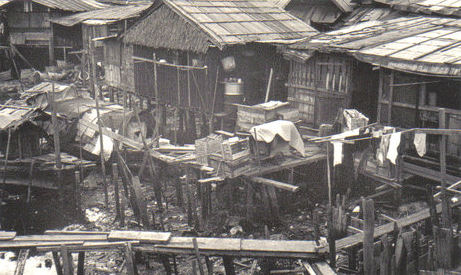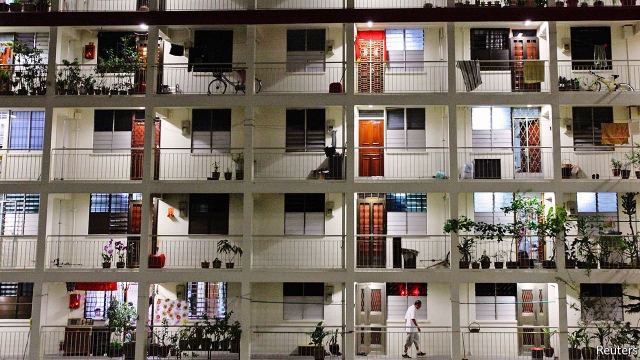From an economically and socially under-developed country to one of the world’s best nations, Singapore has come a long way. Lacking in natural minerals and resources, it drew its strength from being a “stable and progressive economy” to drive more foreign direct investments and private investments. The country and everything that it is today reflects public-private sector partnerships and investment in innovation and security, among other things. During its transformative journey, one of the many challenges that the city-state faced was housing for its people — this was when the government decided to step in. Government housing served two purposes: it gave Singaporeans a sense of ownership towards their country, where their family and friends lived, and also a reason for them to stay in their country and serve it.
In land-scarce Singapore, it can be hard to strike a balance between heritage preservation and necessary urban development. However, the city-state has undertaken long-term strategic planning to optimise depleting resources like land, manpower and energy. What they’ve also achieved by this means, is eradicating homeslessness.
When one hears of public housing, one imagines grimy stairwells, peeling, seepage-infested walls, unloved and uncared for public spaces — but these do not hold true when it comes to Singapore. For over 50 years now, Singapore has been transforming public housing — from basic concrete blocks to shiny and slick high-rises. Singapore started its mass public housing project in the 1940s, led by the Singapore Improvement Trust, which by 1959 had built more than 20,000 flats. When the former prime minister Lee Kuan Yew rose to power towards the end of the 1950s, he built 30,000 more flats in less than three years. And today, the authorities say there are a more than a million.
In 1964, the government introduced the Home Ownership for the People Scheme to give citizens a tangible asset in the country and a stake in nation-building. This push for home ownership also improved the country’s overall economic, social, and political stability. In 1968, to help more citizens become home owners, the government allowed the use of Central Provident Fund (CPF; the equivalent of India’s Employer’s Provident Fund) savings for the down payment, and to service the monthly mortgage loan installments. This, together with other schemes and grants introduced over the years, has made home ownership highly affordable, say officials at the Housing and Development Board in Singapore.

The government, which owns 90 percent of the land, promoted widespread home ownership to knit together an island-nation populated by ethnic Chinese, Indians and Malays. The vast housing system shocks visitors from every nation — it is clean, peaceful, crime-free and every three to five years undergoes a redesigning drive and at times, re-modelling. The public homes of Singapore use the technology and innovation at their service to build lives around them and remind some of the homes built across the US and Europe in the ’60s.
The Housing and Development Board of Singapore conceptualise towns: an example of this is Toa Payoh. A “mature” residential town located in the northern part of Singapore, Toa Payoh is the granddaddy of the towns in Singapore. Home to at least 1,07,100 residents in 37,358 flats, the Toa Payoh town got Singapore’s first Mass Rapid Transit. “These aren’t just neighbourhoods, they are their own little cities, you see,” said a resident on condition of anonymity. “Super markets, restaurants, banks, drinking holes, schools, gardens, lakes… you name it, you have it. All of that is just a short bus ride away. So, it doesn’t matter how far you live from the Central business district. And there is no crime.”

Going further north on the Tanjong Punggol peninsula in the North East Region of Singapore, is Punggol, a quiet, green suburb lined with lakes which is now HDB’s newest township. It’s is also touted to be Singapore’s mini Silicon Valley. Punggol will become the heart of digital and cyber-security industries and is set to create 28,000 new jobs in tech and Information Technology.
As of 2018, there are about a million public homes in Singapore largely concentrated in two dozen new towns which helm the city’s coastal zone. All the homes come with a 99-year lease which are sold at lower-than-market prices. Applicants must wait three or four years for the construction to be completed.
Singapore has no homelessness and compared to other rich cities — London, New York, Hong Kong — HDB homes are more affordable, cleaner and safer. The deal works for the state too. According to reports, in 2015-16 the treasury put aside S$1.8 billion, or 2.4 percent of the national budget, for housing, which was enough to cover HDB’s annual deficit. HDB’s budget was $17 billion and it benefits from government loans but also borrows from banks and the bond market. People’s Action Party, which has been running the country for over five decades, has its housing scheme to thank for its political longevity.
Every Singaporean feels the need to play a social role, a resident shopping at the Waterway Point, an upcoming shopping centre in Punggol said. Owning a home, being part of the nation that they help build, supports the government’s agenda of nation built by their own, a great deal. However, strict rules about who can buy a house and government’s use of control to decide how an average Singaporean lives their life, raises several questions. Married couples are granted priority to own a home, a clause justified to raise country’s low birth rate. Those who are single can apply for their own flats but only if they are still unmarried by the age of 35.
This visit was facilitated by The Singapore International Foundation
Original Post link: Firstpost World News





